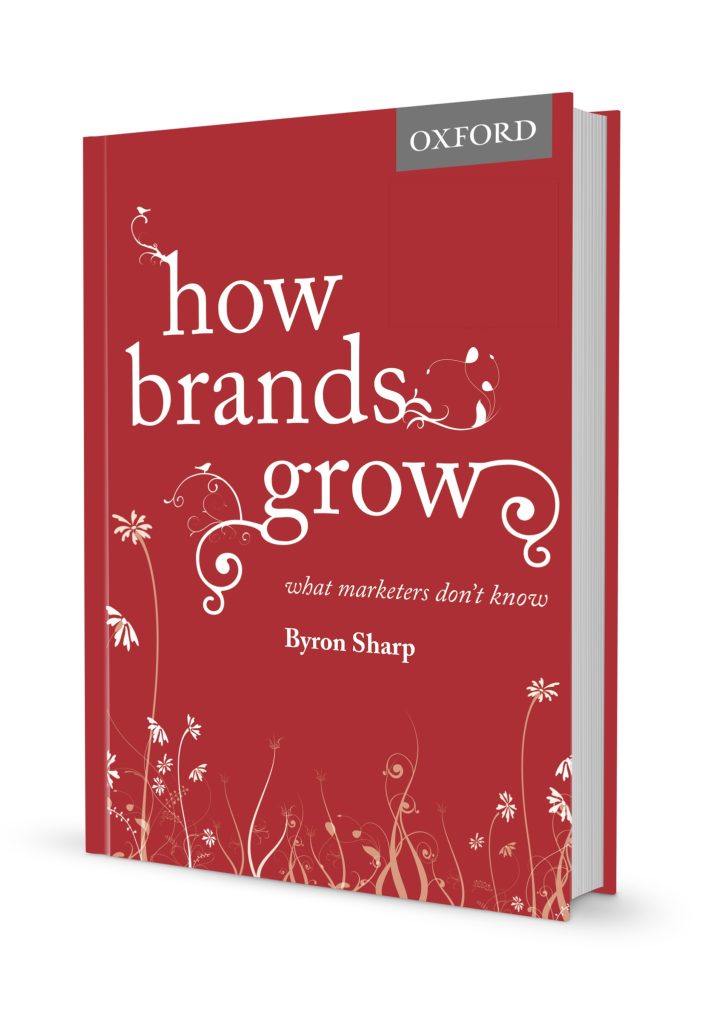
Humanity, Humility, Statistics & Brands. Thoughts About “How Brands Grow” by Byron Sharp
- March 25, 2011
- Doug Garnett
- 0

For all the grand ad agency theorizing about brands, it’s ironic that the most human sense of brands that I’ve read in a very long time comes from an academic statistician reviewing what he learns from hard data.
But Aren’t We Told That New Media Glorifies the Human? I love new media and social media. And I think there will be some excellent and interesting communication opportunities through it. But the self-aggrandized Adbuster fed Utopianism surrounding social media reminds me of 1984′s doublethink and Newspeak.
George Orwell suggested “WAR IS PEACE, FREEDOM IS SLAVERY, and IGNORANCE IS STRENGTH”. Listen carefully to what’s said about new media and you’ll hear “Ad Clutter is Beauty; Message Bombardment is Peace; Corporations are my Friend”.
New media theorists seem think that a consumer loves nothing more than to spend their life searching for brand related content on Facebook while trying to learn the latest social media engine. Truth is that we spend a lot more time thinking about other things (like family, work, money, vacation, …) and don’t think about brands all that often
This is part of the humanity revealed through statistics in the book “How Brands Grow; What Marketers Don’t Know” (Byron Sharp (and others); published by Oxford University Press) It’s a highly challenging, terribly real, and refreshingly human read. For the most part it’s also tremendously perceptive and accurate. (Below I’ll note the two areas where I think his conclusions paint far too broad of a picture.)
Sharp offers us “laws” based in his research on behalf of the biggest advertisers around the world as well as a library with over 50 years of research found in the archives of the Ehrenberg-Bass Institute. To be clear, humanity is the term I apply to what Sharp finds because he shows us a humbling picture of brands and a very real, human sense of their true role in consumer lives.
Sharp finds that brands don’t become big on the sales of their most committed customers. Rather, big brands are big because a lot of people buy a little from them. (Apple is a prime example here.)
He finds that statistics show the 80/20 rule is wrong. This rule suggests that 80% of revenue comes from 20% of customers. Research shows that isn’t true. And, he gives a thorough discussion of what the real situation is.
He finds statistically that mass marketing is the way for brands to grow.
And he finds that statistics show that what most marketers think of as “consumer loyalty” is non-existent. What consumers do is simply have a tendency to buy from a few brands. (In fact, his term is “polygamous” – that consumers are polygamous when it comes to brands.)
Why I love this humanity. As brand marketers we live our lives around our brands. But we often develop a myopia that is far off-target when thinking about consumers. Sharp’s observations are humbling reminders that our brands might be OUR jobs, but they’re not the consumer’s job.
I’ve felt this for some time. Last fall I tried to reflect humanity in my post “Most Consumers Don’t Want to Be Your Friend”. It’s true. Brands aren’t friends. They aren’t people. They aren’t relationships. Brands are commercial operations consumers come to trust to deliver something. So they buy a brand when the “something” they need is what the brand offers AND when buying that brand is convenient or available on their terms.
The myopia I most recently encountered at a presentation by Google. Their advocate talked about the glory of having Gmail read his emails to his wife and send ads based on the content of their conversation. It was surreal. The audience was shocked at the invasive nature of the advertising while he was blissfully unaware of audience shock. Google seems to have developed a surreal disconnection from humanity as it has drunk the heady Koolaid of success.
The Best Marketing Success Comes with Humanity. So, sit back and think: Do you treat consumers humanly? Or are you projecting advertiser fantasy onto consumers – perhaps even asking them to do your job? And then, read this book.
There are a couple of areas where I think Mr. Sharp’s enthusiasm for broad conclusive statements are a problem. I’ve written my thoughts about his persuasion conclusions (link here). In a future post I’ll discuss my concerns about his broad declamations concerning differentiation. Overstating his data in these two areas will lead some marketers astray who desperately need to focus on persuasion and differentiation.
Otherwise, his book is extraordinarily well researched, well thought out, and very challenging. And desperately needed if we are to return a solid sense of human reality to the advertising discussion.
Copyright 2011 – Doug Garnett – All Rights Reserved
Categories: Big Data and Technology, Brand Advertising, Communication, Consumer Electronics, consumer goods, consumer marketing, Human Tech, marketing, Marketing Research, Media, Research & Attribution, Retail marketing, Social Media, Technology Advertising, technology marketing, TV & Video
Comments
Sorry, comments are closed for this item.
